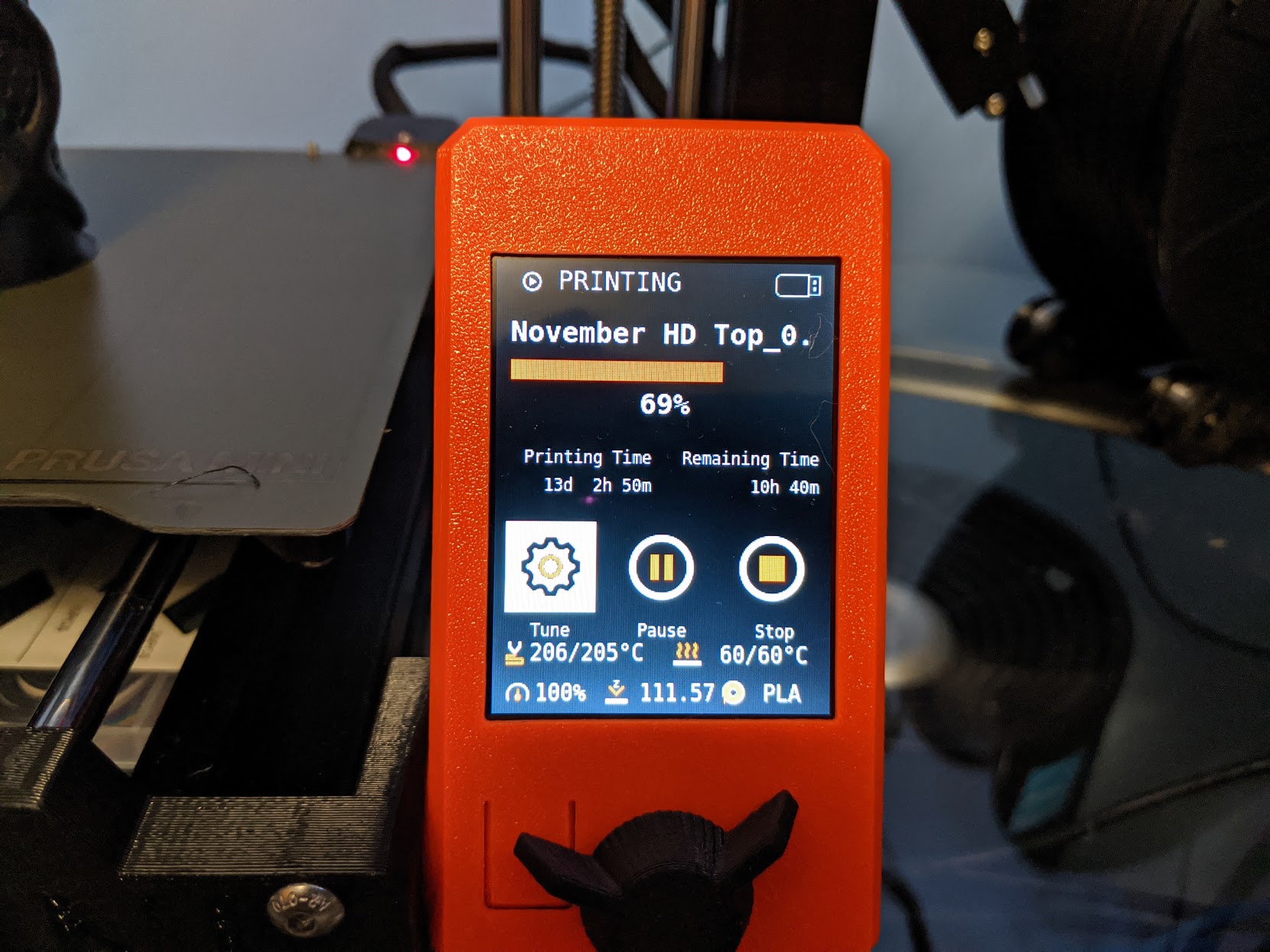This repository includes source code and firmware releases for the Original Prusa 3D printers based on the 32-bit ARM microcontrollers.
The currently supported models are:
- Original Prusa MINI/MINI+
- Original Prusa MK3.9
- Original Prusa MK4
- Original Prusa XL
- Python 3.8 or newer
Run git clone https://github.com/prusa3d/Prusa-Firmware-Buddy.git.
Run python utils/build.py. The binaries are then going to be stored under ./build/products.
- Without any arguments, it will build a release version of the firmware for all supported printers and bootloader settings.
- To generate
.bbfversions of the firmware, use:./utils/build.py --generate-bbf. - Use
--build-typeto select build configurations to be built (debug,release). - Use
--presetto select for which printers the firmware should be built. - By default, it will build the firmware in "prerelease mode" set to
beta. You can change the prerelease using--prerelease alpha, or use--finalto build a final version of the firmware. - Use
--host-toolsto include host tools in the build (bin2cc,png2font, ...) - Find more options using the
--helpflag!
Build the firmware for MINI and XL in debug mode:
python utils/build.py --preset mini,xl --build-type debugBuild the firmware for MINI using a custom version of gcc-arm-none-eabi (available in $PATH) and use Make instead of Ninja (not recommended):
python utils/build.py --preset mini --toolchain cmake/AnyGccArmNoneEabi.cmake --generator 'Unix Makefiles'If you have python installed and in your PATH but still getting cmake error Python3 not found. Try running python and python3 from cmd. If one of it opens Microsoft Store instead of either opening python interpreter or complaining 'python3' is not recognized as an internal or external command, operable program or batch file. Open manage app execution aliases and disable App Installer association with python.exe and python3.exe.
The build process of this project is driven by CMake and build.py is just a high-level wrapper around it. As most modern IDEs support some kind of CMake integration, it should be possible to use almost any editor for development. Below are some documents describing how to setup some popular text editors.
If you want to contribute to the codebase, please read the Contribution Guidelines.
With the XL, the situation gets a bit more complex. The firmware of XLBuddy contains firmwares for the puppies (Dwarf and Modularbed) to flash them when necessary. We support several ways of dealing with those firmwares when developing:
-
Build Dwarf/Modularbed firmware automatically and flash it on startup by XLBuddy (the default)
- The Dwarf & ModularBed firmware will be built from this repo.
- The puppies are going to be flashed on startup by the XLBuddy. The puppies have to be running the Puppy Bootloader.
-
Build Dwarf/Modularbed from a given source directory and flash it on startup by XLBuddy.
- Specify
DWARF_SOURCE_DIR/MODULARBED_SOURCE_DIRCMake cache variable with the local repo you want to use. - Example below would build modularbed's firmware from /Projects/Prusa-Firmware-Buddy-ModularBed and include it in the xlBuddy firmware.
cmake .. --preset xl_release_boot -DMODULARBED_SOURCE_DIR=/Projects/Prusa-Firmware-Buddy-ModularBed- You can also specify the build directory you want to use:
cmake .. --preset xl_release_boot \ -DMODULARBED_SOURCE_DIR=/Projects/Prusa-Firmware-Buddy-ModularBed \ -DMODULARBED_BINARY_DIR=/Projects/Prusa-Firmware-Buddy-ModularBed/build - Specify
-
Use pre-built Dwarf/Modularbed firmware and flash it on startup by xlBuddy
- Specify the location of the .bin file with
DWARF_BINARY_PATH/MODULARBED_BINARY_PATH. - For example
cmake .. --preset xl_release_boot -DDWARF_BINARY_PATH=/Downloads/dwarf-4.4.0-boot.bin - Specify the location of the .bin file with
-
Do not include any puppy firmware, and do not flash the puppies by XLBuddy.
-DENABLE_PUPPY_BOOTLOAD=NO- With the
ENABLE_PUPPY_BOOTLOADset to false, the project will disable Puppy flashing & interaction with Puppy bootloaders. - It is up to you to flash the correct firmware to the puppies (noboot variant).
- With the
-
Keep bootloaders but do not write firmware on boot.
-DPUPPY_SKIP_FLASH_FW=YES- With the
PUPPY_SKIP_FLASH_FWset to true, the project will disable Puppy flashing on boot. - You can keep other puppies that are not debugged in the same state as before.
- Use puppy build config with bootloaders (e.g.
xl-dwarf_debug_boot) on one or more puppies. - Recommend breakpoint at the end of
puppy_task_body()to prevent buddy from resetting the puppy immediately when puppy stops on breakpoint.
- With the
See /ProjectOptions.cmake for more information about those cache variables.
mkdir build-tests
cd build-tests
cmake ..
make tests
ctest .The simplest way to to debug (step through) a test is to specify CMAKE_BUILD_TYPE when configuring cmake -DCMAKE_BUILD_TYPE=Debug .. , build it with make tests as previously stated and then run the test with gdb <path to test binary> e.g. gdb tests/unit/configuration_store/eeprom_unit_tests.
To install custom firmware, you have to break the appendix on the board. Learn how to in the following article https://help.prusa3d.com/article/zoiw36imrs-flashing-custom-firmware.
The firmware source code is licensed under the GNU General Public License v3.0 and the graphics and design are licensed under Attribution-NonCommercial-ShareAlike 4.0 International (CC BY-NC-SA 4.0). Fonts are licensed under different license (see LICENSE).









